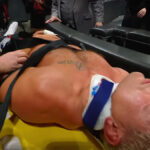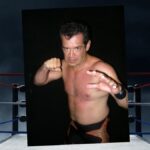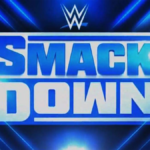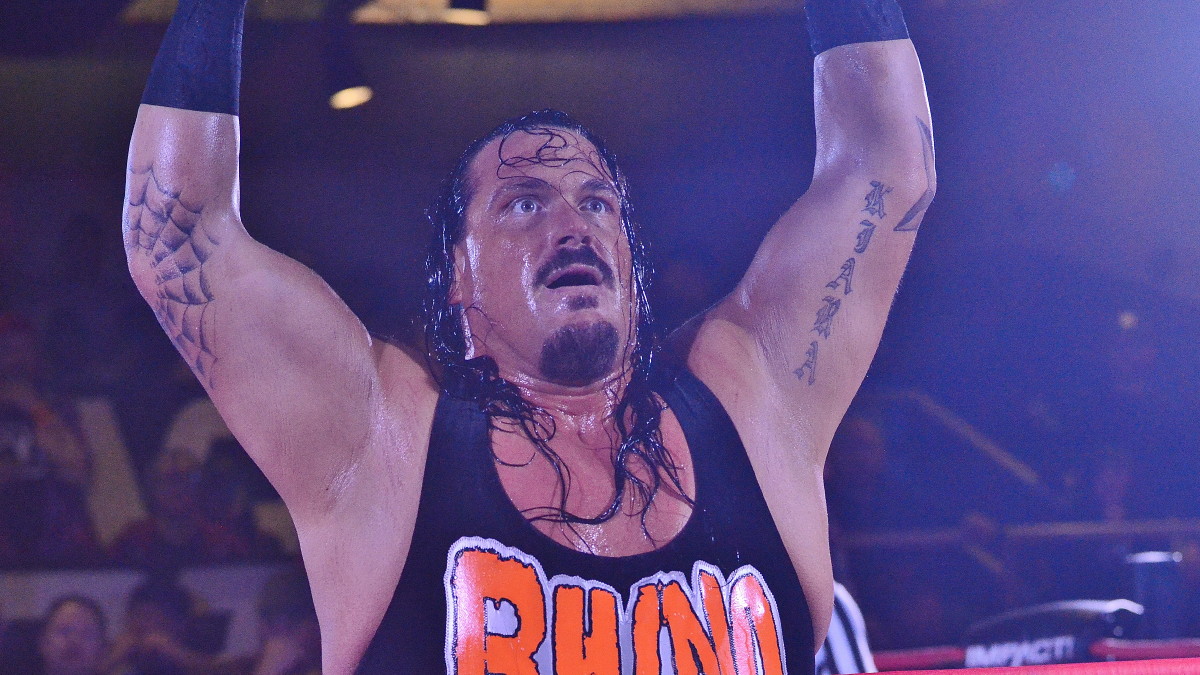Ole Anderson was never one to hold back his opinions. As a wrestler and a booker for decades, he was despised and respected at the same time by colleagues, capable of a string of profanities that would make a sailor blush while planning intricate storylines to be followed in meticulous detail. Now, he’s got an autobiography out where he tells it like it is.

For the book, Inside Out: How Corporate America Destroyed Professional Wrestling, he teamed up with Scott Teal, the publisher of the respected Whatever Happened To… newsletter. They met at a few reunions, including the Cauliflower Alley Club, the Gulf Coast Wrestling reunion and the induction ceremonies for the International Wrestling Hall of Fame in Newton, Iowa.
They agreed to work together two-and-a-half year ago. The autobiography underwent three drafts of the manuscript before the finished, self-published book became available to the public in mid-December 2003.
“In the first month we taped about 25 hours, with me asking question after question. Since it had been so long since many of the events took place, I had to remind him of things that he hadn’t thought about in a long time. Once he read the first draft, he remembered other important facts that added to the book,” Teal explained to SLAM! Wrestling.
In a long-conversation with SLAM! Wrestling, Anderson expanded on his contribution to the book. “I’ve got a fairly decent memory. At least that’s my story and I’m sticking to it. It’s quite obvious that as you get older, you start questioning yourself because you forget even little things,” said Anderson. “I’ve only been lamenting the fact that had we done this back in 1980 or ’85 or even 1990, it would have (been) a little better because I wasn’t out of the public eye so much. Last time I wrestled was so many years ago I can’t even count them.”
Born Al Rogowski, Anderson was a decent amateur wrestler in Minnesota who sought out Verne Gagne for training. He made his pro wrestling debut in 1967 as Al “The Rock” Rogowski, and was soon a champion in Omaha, Nebraska.But it was an opportunity in 1968 to change his name to Ole Anderson, and team with Lars Anderson in the AWA that started him on the road for fame. Soon, Lars had moved on, and Ole was teamed with Gene Anderson. (Even later, Marty Lunde would change his name to Arn Anderson and join Ole in battle.)
Ole would serve as the booker in Georgia and Charlotte, and later, in the NWA/WCW. In all, it was a 30-plus-year career in pro wrestling.
Anderson and Teal were concerned with making everything in the book factually correct, but it was often an uphill battle. “[Scott] was always hitting me with some doggone thing, saying ‘No, no, I don’t think that you wrestled that guy there,'” said Anderson. Teal would dig out the fact from his deep archives, but for Anderson, the point was often lost – it didn’t really matter who was in the match, but from the booking perspective, what was done was what was important.
“The one thing you can say about Ole is, he is a stickler for details, much like I am,” said Teal. “In fact, that’s exactly the way he was when he was booking. He wanted everything done to perfection and didn’t do things half-heartedly. He took the same approach to the book. In that sense, he was great to work with because we did everything we could to be sure that our facts were accurate.”
The book doesn’t go into the sleazy side of wrestling, staying away from gossipy tales of partying, sex and drugs. Anderson doesn’t even talk about his own family life in the book, save the basics. “I don’t mention anything about my family, except a little bit at the beginning, how I started with my little paper route, and all that kind of crap. No, I leave my family out of it. I leave out any love life that I had. I had a bunch of stories, and there’s still a few stories in there, but that becomes a little dicey because, first of all, some of these guys are still married to the same people that they were married to then. Or, even worse, the wife suspected that they were going out with this person and they find out that they were. And I don’t want them to find out through my book. There’s a lot of crap that I could have put in there, and I didn’t because, quite frankly, I was concerned and so was Scott that somebody might decide to sue me for whatever reason.”Instead, Anderson sees his book as the first one that shares the perspective of a booker with the reader. According to Anderson, the idea was to “try to give some sort of idea what wrestling was like from the perspective of mine anyway. Mine comes from the fact that I not only wrestled amateur, I wrestled professionally, but I was also a booker and I was also an owner. I used to say, ‘well, in the last few years, I said, Well, here you’re going to read something about Hulk Hogan that he wrote, you’re going to read something about Ric Flair, maybe, if he knows how to write. If you’ve read something from Arn Anderson, if you’ve read his book, and go on and on and on about all these people that have written books. Well, here’s one difference between Hulk Hogan, Ric Flair, Arn Anderson, and anybody else who’s written a book, including Lou Thesz. What do think is it? … they all worked for me.'”
The secretive nature of the booker and the behind-the-scenes aspect of wrestling made it hard on Teal. “I had some concerns about things that had taken place when I ‘thought’ he was in charge,” Teal said. “After talking with Ole, and doing some checking with other people who worked with him, I came to find out that others were (1) either in charge and giving him strict direction, or, (2) someone else was booking and he was just wrestling. Most notably, the Black Scorpion angle, which he never saw to completion because he was fired in the middle of it.”
Anderson is quite happy to go off on a rant about the suits that prevented any success for any booker in the Ted Turner-owned WCW. He was booked there in the late ’80s, and was an assistant to Bill Watts in 1993. For the last while in WCW, Anderson worked out training the talent.”I’d never been fired in my life. I got fired by Ted Turner in 1990, not Ted Turner, but some other assholes working there. And then I got fired after they fired Bill Watts, they fired me in 1994. Bill got fired, I believe, in ’93. They had demoted me to a point where I was working out with the wrestlers, and that was fine. I was happy. I enjoyed going down there to the gym on a daily basis and working out for four to five hours a day with these kids who wanted to be wrestlers,” he said.
Anderson recalled working out with Sting and a young Steve Austin. “[They] wanted me to teach them about wrestling, and I would say that that lasted for four, five, six weeks maybe when they realized they didn’t need to know anything about wrestling because Turner was willing to pay them all kinds of money,” he said, before continuing. “When I was finally in a position when I was supposed to teach these guys, the guys that needed to learn, they were already making over a million bucks. What could they possibly learn from me? The guys that were brand new that needed to learn realized that they didn’t need to learn anything because the guys that are making all the money don’t know f— all.”
When Eric Bischoff was put in charge, he saw Anderson’s $100,000 paycheque, and saw a place to save some money. Bischoff offered $60,000, thinking that Anderson would scoff and bolt. Instead, Anderson stuck around for a while longer at the lower pay.So in many ways, the publication of his book is a coming out party of sorts. But it isn’t in any way an attempt to get back into the business, or a pitch for a job. “There’s only one guy that promotes wrestling right now, and his name is Vince McMahon. Vince McMahon wouldn’t piss on the best part of me. And I wouldn’t piss on the best part of Vince McMahon,” Anderson quipped.
Now 61, and retired from the bumps in the ring since 40, he’s down to about 225 pounds from his wrestling weight of 265-275 pounds. Like most old-timers, he has his share of ongoing health issues. “I’ve been scheduled for shoulder replacements for the last seven or eight years, a knee replacement on my left side. I fell off the damn roof here back in June and broke my hip. The only bones that I had that were good were my hips. … I’ve got the same type of problem that Arn had, where he had operations on his neck, but I won’t let them operate on mine. I’ve got C5, 6, 7, they’re all screwed up. So I’m in constant discomfort, but I live with it. I do the best I can do. I could never get in the ring again. Hell, if somebody hit me on the back, they’d probably kill me. My left arm, for the most part, is numb up to the shoulder. My right arm is similar because I’ve got so much damage to my neck.”
Back in the public eye with magazine and radio interviews, Anderson has also started going to the occasional indy show or reunion close to his home on Lake Hartwell in Georgia. For years, he declined invitations to go, comfortable with the money that he had set aside during his career that he could do so. “So now the question is, why am I going?” asked Ole. “Well, because I’m 61 years old, I’m tired of sitting in my house all day. It provides me a little opportunity to see some guys that I like. The last time I went, I saw Bill Eadie, I saw Tommy Rich last year … I saw Wrestling II. There were a couple of other guys. That was okay. It was just a chance to be back in a dressing room a little bit.”
The big one is Super Bowl weekend in Charlotte, North Carolina for the huge Mid-Atlantic Wrestling Legends event. “A lot of people are supposed to be at this reunion … so there will be a few guys there that I enjoy and there will be a few guys there that I hate. And there will be a few guys there I’ll say, ‘Just go f— yourself.’ That’s all.”












